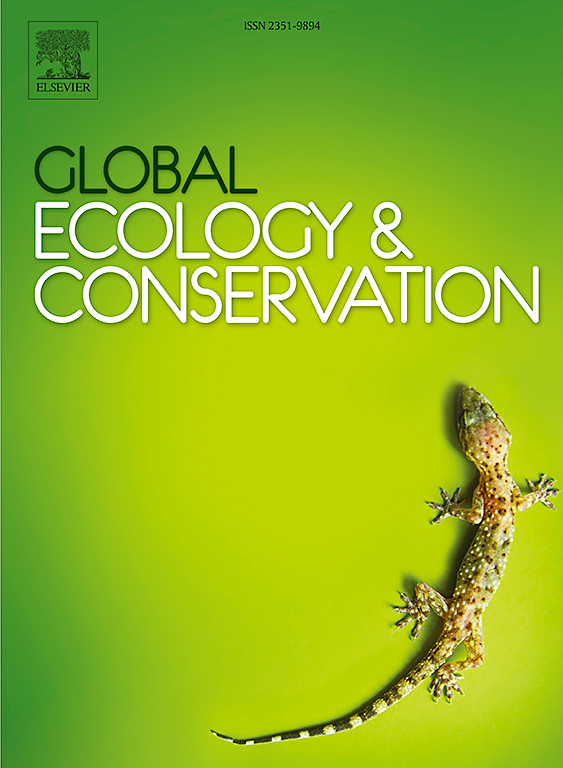Ecological drivers and conservation challenges of Indian pangolins (Manis crassicaudata) in Western Pakistan
IF 3.4
2区 环境科学与生态学
Q1 BIODIVERSITY CONSERVATION
引用次数: 0
Abstract
The Indian pangolin (Manis crassicaudata), classified as endangered, faces significant threats from habitat degradation and illegal poaching, which has led to rapid population declines. This study examines the ecological factors influencing pangolin population trends, and the associated conservation challenges based on extensive field surveys conducted from November 2021 to March 2023. The findings suggest that habitat type and elevation (300–600 m) significantly influence burrow distribution, with mid-elevation environments providing optimal conditions. Over three years, burrow density reduced from 0.78/km² in 2021–0.43/km² in 2023, indicating a population decline. Conservation attitudes of local people were influenced by education, occupation, and socio-economic factors. This research was undertaken in Pakistan's semi-arid and mountainous habitats, where pangolins are subjected to growing pressures of habitat loss and illegal trade. These findings suggest an immediate need for conservation interventions, such as habitat restoration, improved enforcement of wildlife laws, and community involvement. Integrating ecological and socio-economic approaches, this study provides valuable insights that can inform regional as well as international conservation strategies and support evidence-based decision-making for the protection of the Indian pangolin.
巴基斯坦西部印度穿山甲的生态驱动因素和保护挑战
印度穿山甲(Manis crassicaudata)被列为濒危物种,面临栖息地退化和非法偷猎的严重威胁,导致其数量迅速下降。本研究基于2021年11月至2023年3月的广泛野外调查,探讨了影响穿山甲种群趋势的生态因素以及相关的保护挑战。结果表明,生境类型和海拔高度(300 ~ 600 m)对洞穴分布有显著影响,以中高海拔环境为最佳条件。三年内,洞穴密度从2021年的0.78个/km²下降到2023年的0.43个/km²,表明种群数量下降。当地居民的保护态度受到教育、职业和社会经济因素的影响。这项研究是在巴基斯坦的半干旱和山区栖息地进行的,在那里穿山甲受到越来越大的栖息地丧失和非法贸易的压力。这些发现表明,迫切需要采取保护措施,如栖息地恢复、加强野生动物法的执法和社区参与。结合生态学和社会经济方法,本研究提供了有价值的见解,可以为区域和国际保护战略提供信息,并支持基于证据的印度穿山甲保护决策。
本文章由计算机程序翻译,如有差异,请以英文原文为准。
求助全文
约1分钟内获得全文
求助全文
来源期刊

Global Ecology and Conservation
Agricultural and Biological Sciences-Ecology, Evolution, Behavior and Systematics
CiteScore
8.10
自引率
5.00%
发文量
346
审稿时长
83 days
期刊介绍:
Global Ecology and Conservation is a peer-reviewed, open-access journal covering all sub-disciplines of ecological and conservation science: from theory to practice, from molecules to ecosystems, from regional to global. The fields covered include: organismal, population, community, and ecosystem ecology; physiological, evolutionary, and behavioral ecology; and conservation science.
 求助内容:
求助内容: 应助结果提醒方式:
应助结果提醒方式:


